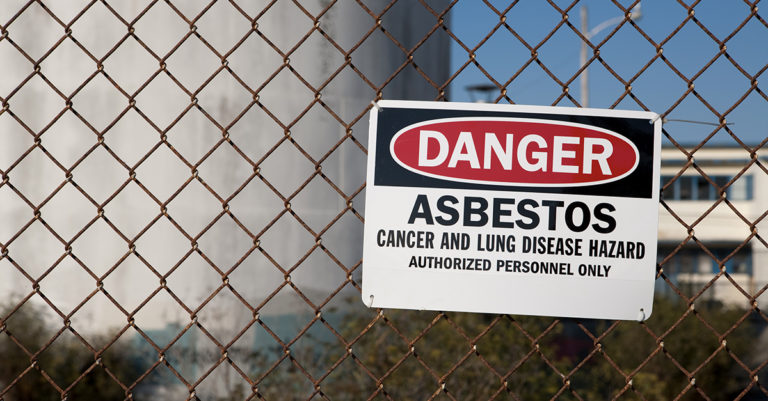Montgomery County Joins the Fight against Manufacturers of Prescription Opioid Painkillers
Montgomery County, NY – Simmons Hanly Conroy, one of the nation’s largest law firms focused on consumer protection and mass tort actions, today filed a lawsuit in conjunction with Montgomery County, New York, against pharmaceutical companies and drug distributors over the aggressive and fraudulent marketing of prescription opioid painkillers that has led to a drug epidemic in the county and throughout the nation.
In the complaint, the County seeks compensatory and punitive damages for the millions of dollars it spends each year to combat the public nuisance created by the drug companies’ deceptive marketing campaign that misrepresented the safety and efficacy of long-term opioid use.
“Montgomery County, like many other counties across New York, has been devastated by the public health crisis caused by the opioid epidemic,” said Simmons Hanly Conroy Shareholder Paul J. Hanly, Jr., lead counsel for the county in this case. “This crisis could have been avoided. The defendants have manufactured, promoted and marketed opioids by omitting critical information that has long been known about the drugs’ addictive qualities and other risks associated with their prolonged use.”
Today’s filing follows similar action taken by Simmons on behalf of New York City and 20 other counties in New York. The lawsuits, which were filed in each county’s state supreme court, have been consolidated in Suffolk County Supreme Court and are being heard by State Supreme Court Justice Jerry Garguilo. Hanly was appointed in July 2017 as co-lead counsel overseeing the consolidated New York State opioid litigation.
“Simmons Hanly Conroy and Montgomery County officials will hold the pharmaceutical companies and drug distributors accountable for their role in the opioid crisis,” said Meghan Manion, Montgomery County Attorney. “We are committed to combating this epidemic and will seek justice for not only the residents of our county, but for those affected statewide.
The defendants in the lawsuit include drug makers Purdue Pharma L.P.; Purdue Pharma, Inc.; The Purdue Frederick Company, Inc.; Teva Pharmaceuticals USA, Inc.; Cephalon, Inc.; Johnson& Johnson; Janssen Pharmaceuticals, Inc.; Ortho-McNeil-Janssen Pharmaceuticals, Inc.; Janssen Pharmaceutica, Inc.; Endo Health Solutions Inc.; Endo Pharmaceuticals, Inc.; and Insys Therapeutics, Inc. The drug distributors named in the lawsuit are McKesson Corporation, Cardinal Health, Inc., and AmerisourceBergen Drug Corporation.
According to the complaint, accidental overdoses, mainly due to prescription opioids, was the leading cause of unintentional death in New York State in 2015, according to a report from the National Safety Council. At least five Montgomery County residents suffered opioid-related overdose fatalities between 2003 and 2014. In 2014, there were 147 opioid-related emergency department admissions in Montgomery County, a 51.5 percent increase since 2010, and 221 inpatient hospital admissions for the same reason. There were 255 Montgomery County residents admitted to chemical dependence treatment programs in 2015. In 2016, that number rose to 275. The use of naloxone in Montgomery County, administered to reverse the effects of opioids, jumped from 49 incidents to 62 incidents between 2015 and 2016.
In the complaint, the county seeks relief, including compensatory and punitive damages for the millions of dollars it spends each year to combat the public nuisance created by the drug companies’ deceptive marketing campaign that misrepresented the safety and efficacy of long-term opioid use.
Apart from the toll on human life, the crisis has financially strained the services the county provides its residents and employees. Human services, social services, court services, law enforcement services, the office of the coroner/medical examiner and health services, including hospital, emergency and ambulatory services, have all been severely impacted by the crisis. For example, as a direct and foreseeable consequence of the defendants’ egregious conduct, the county has paid, and continues to pay, millions of dollars for health care costs stemming from prescription opioid dependency. These costs include unnecessary and excessive opioid prescriptions, substance abuse treatment services, ambulatory services, emergency department services, and inpatient hospital services, among others. The defendants’ conduct also caused the county to incur substantial economic, administrative and social costs relating to opioid addiction and abuse, including criminal justice costs, victimization costs, child protective services costs, lost productivity costs, and education and prevention program costs, among others.
The lawsuit alleges the defendants sought to create a false perception in the minds of physicians, patients, health care providers and health care payors that using opioids to treat chronic pain was safe for most patients and that the drugs’ benefits outweighed the risks. This was allegedly perpetrated through a coordinated, sophisticated and highly deceptive promotion and marketing campaign – including unbranded messaging to evade extensive regulatory framework governing branded communications. These communications, which began in the late 1990s, became more aggressive around 2006 and continue today. Specifically, the complaint details how the defendants allegedly poured significant financial resources into generating articles, continuing medical education courses and other “educational” materials, conducting sales visits to doctors, and supporting a network of professional societies and advocacy groups – all of which were successful in the intended purpose of creating a new and phony “consensus” supporting the long-term use of opioids.
Drug distributors have both the obligation and the tools to track suspiciously large surges in opioid demand, including at the level of individual pharmacies or clinics. The lawsuit alleges, however, that the defendants have failed to use these tools to warn public officials about suspicious orders, which they are legally required to do, or to reasonably exercise control over the obvious oversupply of opioid pills.
In addition to Montgomery County, Simmons has filed similar ongoing litigation in New York on behalf of New York City and the counties of Broome, Dutchess, Erie, Fulton, Greene, Herkimer, Monroe, Ontario, Orange, Oswego, Schenectady, Seneca, Suffolk, Sullivan, St. Lawrence, Ulster, Washington and Wyoming. Simmons represents or has filed similar litigation on behalf of more than 200 other municipalities in Arkansas, California, Connecticut, Georgia, Iowa, Illinois, Indiana, Idaho, Louisiana, Minnesota, Missouri, New Jersey, North Carolina, Ohio, Pennsylvania and Wisconsin. Through its opioid-related litigation, Simmons Hanly Conroy represents communities populated by nearly 50 million Americans.




